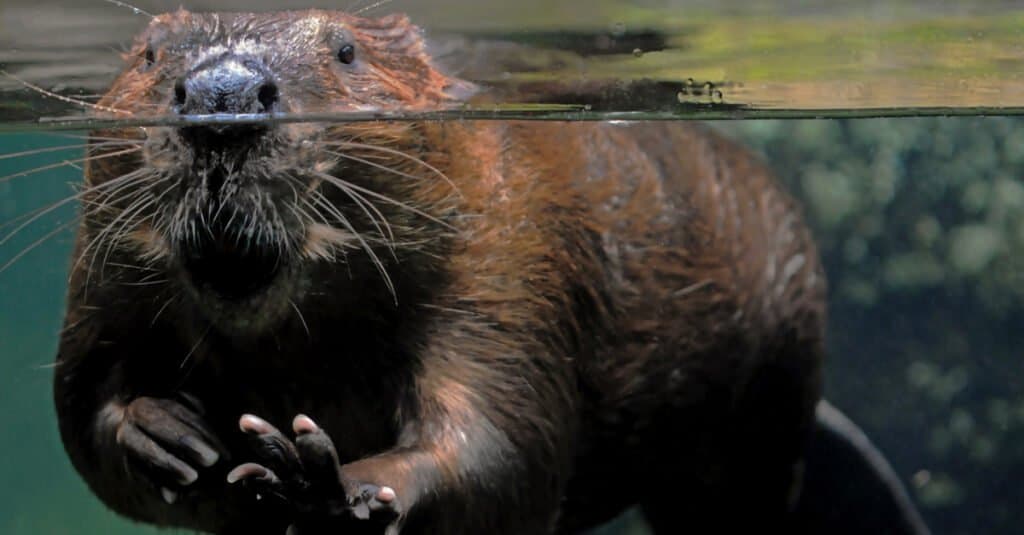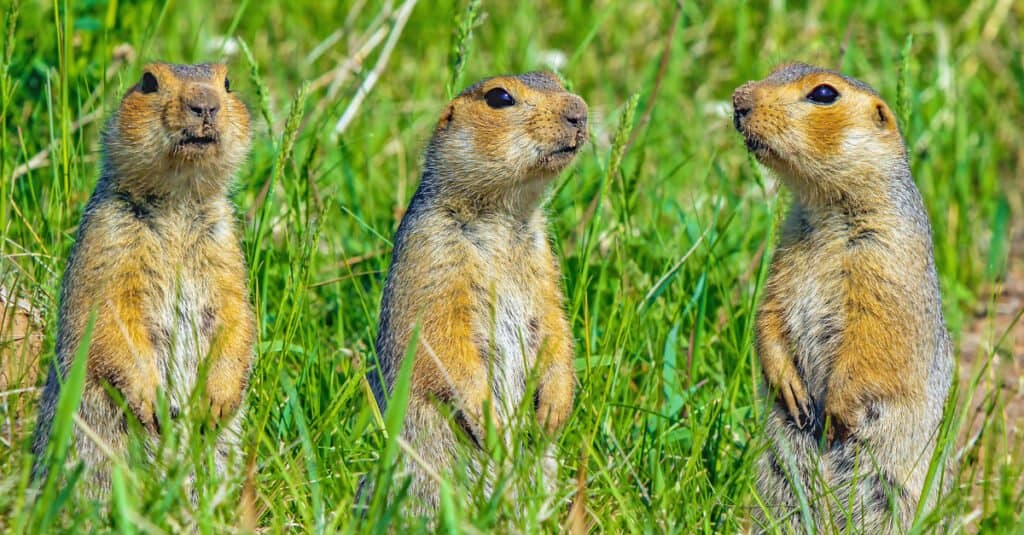Rodents are found on every major continent, and they remain one of the most diverse and prolific groups of animals on the planet. It can be hard to keep track of which animals are rodents, but it can also be difficult to track which animals fall under the label of mammal as well. If you’ve ever wondered whether rodents are mammals, you’ve come to the right place. We’ll provide you with all the details you need to become a pro on both rodents and mammals.
We generally think of rodents as being nasty vermin. However, the rodent family has some very interesting members such as beavers, squirrels, and prairie dogs. Of course, the rodent family does also include rats and mice, which certainly can be extremely destructive pests.
What Are Rodents?
Rodents are warm-blooded, milk-producing creatures that share in common sets of teeth that are designed for efficient chewing and gnawing. If you want to know whether a creature is a rodent or not, you can conclude pretty quickly by looking at a picture of the animal’s dental x-ray. Both the upper and lower jaw contains two incisors each, and a gap between the incisors and the molars known as the diastema maximizes the chewing potential of the teeth.
This unique dental structure also ensures that the incisors always stay sharp and of equivalent length because of how they come in contact with the object being bit into. Each rodent also has at least one — but usually multiple — molars and premolars that are often known as “cheek teeth”. Rodents are missing canine teeth, and the lack of enamel on their incisors reflects the fact that their teeth are always growing.
The lack of canine teeth is a tip-off to the fact that rodents aren’t carnivores. Whereas canine teeth are used for ripping and tearing, the sharp incisors of the rodent are more about tearing. These sharp teeth can be used for burrowing, but they also help break down the vegetarian diet of the rodent — which typically includes fruits, seeds, and leaves. Rodents also have a pouch known as the caecum. This unique part of their physiology allows them to break down the cellulose of tough plant materials thanks to the bacteria that grow within the caecum.
The personalities and characteristics of rodents can vary wildly, but they tend to be prey in the habitats they occupy. Both birds and mammalian predators feed on rodent species. While different rodents employ a variety of different defensive measures against predators, one of their primary methods for maintaining their population is through breeding. The average female mouse, for instance, will give birth to about 50 pups in a year, and they breed often. The typical litter consists of six to eight pups. While that’s not the standard for rodents, large litters and frequent breeding are a commonality among rodent species.

©karen crewe/Shutterstock.com
What Are the Different Types of Rodents?
Rodentia is an order, which means that every rodent is a member of the class above it — and that each rodent can be identified by a more specific family. Rodents can be found on every continent — and the taxonomic classification system makes it easier to identify them by breaking down the entire population into roughly 30 families with their own distinguishing features. Here are some of the most important and interesting of those families.
- Castoridae — The American and European beaver are the only living members of this species, but their propensity for manipulating the environment makes them critical members of many ecosystems. Both species maintain tight family units and use their sharp incisors to feast on trees which also serve as materials for their dams.
- Sciuridae — Both tree and ground squirrels belong in this family, and they represent a staggering 273 species. They are one of the most prodigious species in the world and have found habitats on every continent other than Australia. Depending on the species, a squirrel may either live in the hollow of a tree or burrow deep beneath the earth.
- Erethizontidae — All the members of this family originate in the Americas, but their most distinguishing features are the painful spines that line their bodies. Also known as porcupines, they’ve developed these unique accessories as a way to protect them from predators. A separate family of porcupines known as Hystricomorpha can be found in Europe, Asia, and Africa and are distinguished by the fact that they have fur in addition to their quills.
- Muridae — Muridae isn’t just the largest rodent family in the world. It’s the largest family in the entire animal kingdom. More than 1300 species belong in this family, and they include common classroom pets like gerbils, rats, and mice. Most murids exhibit good senses of smell and hearing, and that allows them to adapt to a broad variety of ecosystems.
- Heteromyidae — The most distinguishing feature of this family is that they come equipped with cheek pockets that can be used to store food and carry it for long distances. Most but not all members of the species create burrows to help conceal them from predators — and members like the kangaroo rat have extended legs that allow them to hop long distances.
What Are Mammals?
An animal needs to meet some strict criteria to meet the definition of being a mammal, but there’s a good reason for that. Recognizing familiar traits that exist between different species allows us to trace genetic familiarity over generations. It’s known that mammals descended from reptiles long ago, although the modern human is far removed from a creature like a crocodile. A hierarchical listing allows for a system of evaluating life that’s more structured. Mammals fall under the Kingdom of Animalia and are identified under the class Mammalia.
All mammals are vertebrates, which is to say that they all have a spinal column that helps direct neurological information from their brains to their body. Mammals have the pride of being the most sophisticated organisms on Earth, and they include animals as wide-ranging as humans, leopards, and naked mole rats. All members of Class Mammalia are warm-blooded creatures that nurse their young with milk made from the body and are capable of growing hair. The internal physiology of mammals is universally familiar as well, with all species sharing four-chambered hearts and relatively complex brains when compared to other classes of animals.

©SERGEI BRIK/Shutterstock.com
Are Rodents Mammals?
Mammals can be split up into 19 different orders, and order Rodentia ranks among the most populous. There are roughly 2,000 different species of rodent on the planet, and they constitute roughly 40% of the population altogether — though that shouldn’t be unexpected considering how much the average rodent breeds.
Not all mammals give birth to live young, but only the echidna and duck-billed platypus don’t. Rodents share the trend with most of their immediate order members by giving birth to litters of pups. While the classification for rodents isn’t in question — and, certainly, they won’t be crossed off the list of mammals any time soon — there is some controversy regarding how to further delineate between rodent species. The standing classification system splits up rodents into three categories depending on the shape and direction of their jaw muscles, while an upstart system of classification delineates two suborders identified by the jaw and incisors rather than the muscles.
Up Next…
- Pet Rodents Rats and mice can, and often are, destructive pests. However, they can also be very good pets. Learn more about them here.
- Are Beavers Rodents? Beavers may not be the first thing to spring to mind when you see the word rodent but they do fall into this category.
- Are Bats Rodents? People often refer to bats as flying mice but are they? Learn more about them here.
The photo featured at the top of this post is © Jearu/Shutterstock.com
Thank you for reading! Have some feedback for us? Contact the AZ Animals editorial team.







